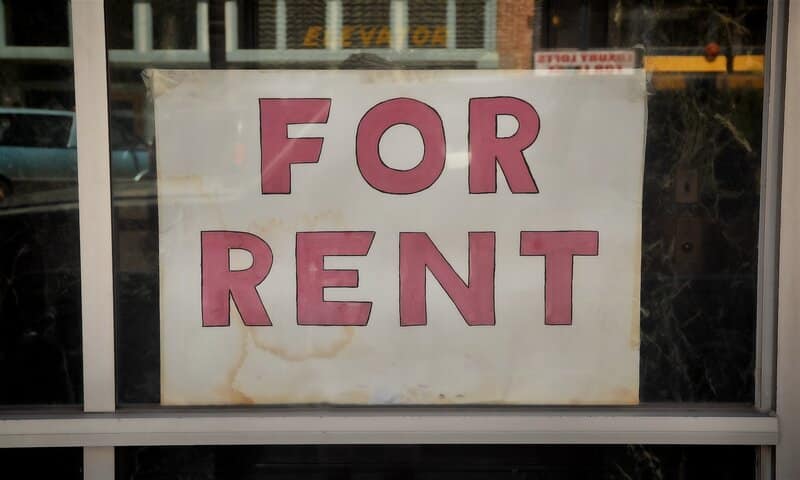Rent prices are rising in Australia’s capitals. Over 40 per cent of suburbs are recording rental increases of 10 per cent or more in the past year, despite the increase in the total supply in the market. There is also now a narrow gap between the average house and unit rents.
The average rent is now $583 a week across the nation, with the average rent for a house rising to $594 and an increase to $558 for a unit.
The reasons behind Australia’s rental crisis

One of the reasons behind the current rental crisis in Australia is the lack of homes to keep up with household growth and population. Between 2016 and 2021, almost one million new households were formed due to the significant rise in the number of single-person households due to relationship breakdowns and COVID lockdowns.
Another reason is the huge internal migration numbers that have impacted local vacancy rates in regional and rural areas, specifically in Queensland (QLD).
The reopening of Australia’s borders also triggered an increase in rental housing that has caused vacancy rates to drop dramatically in 2022.
What can be done to improve the rental crisis in Australia?
Several solutions are being thrown on the table to eradicate the growing rental crisis across the nation.
Recently, the Greens are calling for a rent freeze to protect tenants from the “bill shock” of a sudden increase ranging from 20 per cent and 30 per cent. The increase could even surpass the approximate range upon lease renewal.
Affordable housing built in the right areas is another area that should be focused on. A 2021 research by AHURI showed that low-income households are crucial in the workforce; however, they struggle to find affordable rental housing in the major urban areas across the country.
This results in working households having to endure the affordability stress and daily commutes to get to their work. AHURI identified three main policy options to reduce the problem between employment-rich areas and affordable housing:
- Increasing affordable rental housing near main employment areas
- Improving access and connectivity to outer suburban and satellite city housing markets through investment in transport and communications infrastructure
- Concentrated decentralisation that will cultivate new employment clusters via place-based funding interventions and digital innovation

The link between energy costs and rental prices
Another burden to renters, on top of the increasing rental rates, is the problem with the higher energy rates. Unfortunately, most renters don’t have full information on the energy characteristics of a property. While landlords usually don’t have enough incentive to invest in energy efficiency as well, as they often do not see the immediate return on investment. To add to this, the Russian withdrawal of supply has also hit Australia’s wholesale price of gas.
The state and federal energy ministries have committed to “consider all options to take strong action to bring down power prices.” It will involve price controls on gas producers. However, many don’t see this as the only solution to solve the problem. The ministers should also realise that they can also help reduce energy needs by enhancing energy efficiency.
A good example is the heating in a rental property. Many rental properties lack any kind of heater and they rely on plug-in heaters that are not efficient in heating a home. Only the Victorian government has implemented regulations requiring rental properties to install an energy-efficiency heater.
Thus, experts agree that the government must set minimum standards for rental properties and encourage landlords to invest in making their properties more energy efficient.

How renters can save more money on energy today
With the increasing rent prices that are also fueled by higher energy prices, it’s natural for renters to look for solutions to lower their monthly expenditures.

Taking small steps can lead to big savings. Renters can look into their appliances as they account for around 30 per cent of home energy use. Purchasing energy-efficiency models are effective in lowering your energy bills. Check for the Energy Rating Label and compare it to similar models.
Solar power can also have a dramatic impact on renters’ energy bills. This is where split incentives come in when the costs and benefits of rooftop solar panels on a rental property are split between the tenant and landlord.
Solar gardens are also an alternative to rooftop solar. These are solar arrays where solar panels are combined and set up privately. Renters can purchase or lease a number of panels in a small-scale array directly connected to the grid in a location removed from their rent.
Many renters are paying too much for their energy bills. You should find out if your house is one of them by comparing your energy bill using our FREE Energy Bill Comparator. It can help reduce your bills by finding a better plan from Australia’s leading energy retailers. All you need is your current energy bill!
We recommend reaching out to your landlord and discussing the options available to both parties. With many free or low-cost upgrades available across many states for rentals, such as the heat pump hot water system $1000 rebate available to Victorian households, there’s many opportunities for renters and landlords to capitalise on incentives available, save money, and add value to the home.
Whether you’re looking to replace your hot water system, replace your lighting or install a solar PV system, we can connect you with trusted local installers who will provide you with up to 3 FREE quotes. Click this link today.













































